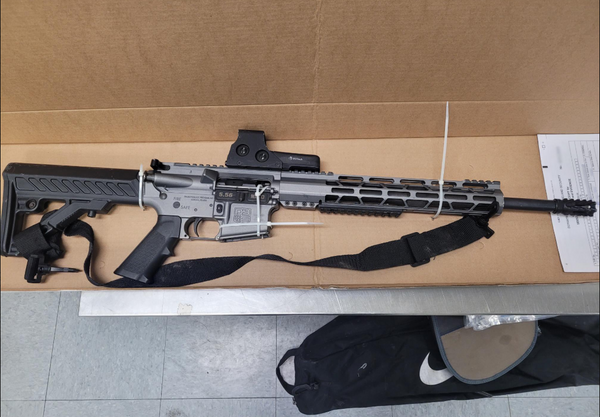1025_0011.jpeg?width=1200&auto=webp&crop=3%3A2)
A strange and sensual performance by Alexandra Bachzetsis took place last evening, occurring at the same time as Frieze week in London. Unfolding at The Hellenic Centre, Rush(es), examines desire, the commodification of the body, and human relationships with machines.
Unpacking questions of agency and pleasure under surveillance culture, at particular moments, this solo project aims to give the impression of an introspective study uncomfortably observed by an audience. This tension between artist and viewer is palpable from the outset. Viewers huddle closely around Bachzetsis’ stage — a white strip stretching from one end of the room to the other, where a large screen is present.
The intimate layout enables us to experience the erotic layers of the performance with unsettling proximity. This underlying sense of audience discomfort is a key feature of the work, Bachzetsis tells me, aligned with her strong belief that “the body is always political.” Through robotic movements that isolate specific areas of the body, the artist attempts to foreground this concept, probing the uncanny, erotic tension between human flesh and objects.
Rush(es) begins with Bachzetsis straddling a large black case, an orange wig covering her face. This theme of anonymity is a recurring visual throughout. By hiding her profile, the artist aims to interrogate how we read the identity of a person.
An examination of dysmorphia — the psychological reinvention of our bodies as new forms — is central to Bachzetsis's work, and one she pushes to its existential limit: “What does it mean to have, or not have, a face?” she asks. To the artist, interrogating these basic assumptions opens up an expansive dialogue. “Where is identity?” Bachzetsis continues. “Is it in the face? Is it in our cultural heritage, or our genders?”
The relationship between commodification and femininity is another motif that runs throughout the peformance. Rush(es) makes use of various props, playing with their functions and ergonomic designs in erotic and occasionally amusing ways. At the start of the show Bachzetsis slips into her bright turquoise Pleaser heels — the kind worn by dancers in a strip club — tying up the laces in a slow, sensual manner. “I was interested in how these shoes act as an extension of the body as a sign of auto-erotic, prosthetic sexuality,” Bachzetsis explains.
To Bachzetsis, this stimulation is a result of how the heels shape her posture and walk, but also how they sound on the ground, or slapping into each other as she dances: “It’s like emitting feedback to yourself, from your feet to the rest of your body”.
1025_0048.jpeg)
Another object to become a site of the artist’s self-gratifying approach is a robot vacuum cleaner, which moves around the space like a pet, touching the shoes of audience members. Bachzetsis follows the robot, crawling on her hands and knees. It is an uncanny spectacle that reinforces the artist’s interrogation of the boundaries between human and animal, body and machine. It is also entertaining, offering a moment of welcome humour for audience members who were unsure whether laughter was an appropriate response.
Still, this playfulness does not distract from Rush(es)’ serious themes. “A big part of my research”, the artist explains, “is dedicated to questions around the body as an object, and how this lens instrumentalises pronounced forms of femininity.” Bachzetsis treats objects as symbols of womanhood and its various iterations and embodiments. If the pleaser shoes are an allusion to sex work, then the vacuum cleaner is perhaps more of a domestic sign: “Motherhood is something I see as a construction by society. There are many different versions of it, and I’m intrigued by those archetypes.”
Rush(es) presents objects as a way to describe objectification. Bachzetsis, through some literal and choreographic methods, objectifies her own body. This process, though exposing, does not leave her powerless on stage — quite the opposite. Moments when her body seems to merge with machines or props are abruptly followed by vogue-inspired sequences and striking, stripper-style movements that inject sudden bursts of energy into what we’re seeing.
This diverse use of dance continually challenges the audience’s perception of agency within the work: does Bachzetsis give up power by stripping down to a purely carnal form, or is this an exercise in bodily autonomy? To answer that question neatly might be to produce a reductive reading of Rush(es), which clearly aims to problematise and add layers of nuance to simplifying definitions of womanhood and how it should be embodied. “I think we should be able to embrace all kinds of sexualities”, Bachzetsis explains. “I don’t think there should be a feminist doctrine that states otherwise”.







